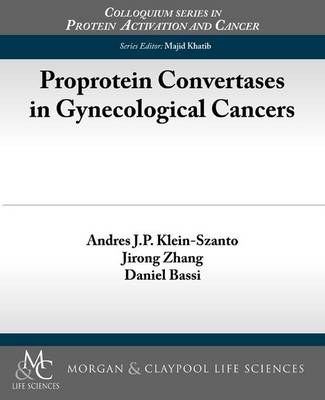Gynecological cancers include neoplasias of internal female genital organs, mainly ovarian, endometrial and cervical tumors, and cancers of the external female genital structures. Current scientific evidence indicates that both up- and down-regulation of the expression of PCs are part of the multiple changes occurring in these gynecological tumors. Nevertheless, the physiological significance of this puzzling pattern of PC expression remains elusive. The fact that PCs can activate both pro- and anticarcinogenic substrates may indicate that the nature of the overexpressed substrates in certain cancer types could determine the final outcome; i.e., slowing or accelerating cancer development.
The expression of PCs in gynecological cancers and the correlation of this expression with other markers may facilitate preventive and therapeutic interventions in at-risk populations. Several studies single out furin as the main PC overexpressed in ovarian and endometrial cancers. For instance, furin expression has been associated with five-year survival in ovarian cancer, and measurements of furin activity in cells obtained by lavage constitute a non-invasive diagnostic tool for endometrial cancer. The other ubiquitously expressed PCs, PC5, PACE4, and PC7 do not show any changes with respect to normal controls or are decisively silenced, as indicated by studies on PACE4 expression and regulation in both ovarian and endometrial tumors.
PCs activate crucial substrates implicated in the progression of gynecological cancers, including adhesion molecules, metalloproteinases, and viral proteins. In the first place, furin, and possibly the other PCs, process both E- and N-cadherin. Processing of these molecules results in variations of cell adhesiveness. The pattern of expression of N- and especially E-cadherin varies during tumor development, as well as in the stages of either epithelial to mesenchymal or mesenchymal to epithelial transitions. E-cadherin is up-regulated during initial steps in ovarian tumor development, whereas N-cadherin follows a more complex expression pattern. Nevertheless, cadherin processing requires fully functional PC activity, a feature that may be explored for future therapeutics applications. Furthermore, PCs drive the activation of metalloproteinases, especially the membrane-type metalloproteases MMP-14 and MMP-15, and also possibly MMP-9. The activity of these metalloproteases promotes the invasion into the omentum and other peritoneal structures, facilitating the degradation of collagens and other extracellular components. Finally, the role of furin in enabling papilloma virus infection, one of the main etiological factors in the development of exocervical cancer, and possibly vaginal and vulvar carcinoma, cannot be overemphasized.
These experimental evidences suggest that careful targeting of PCs in gynecological cancer may represent a feasible strategy to deter tumor progression.
- ISBN13 9781615044641
- Publish Date 30 August 2012 (first published 15 August 2012)
- Publish Status Out of Print
- Out of Print 4 March 2017
- Publish Country US
- Imprint Morgan & Claypool Publishers
- Format Paperback
- Pages 43
- Language English
